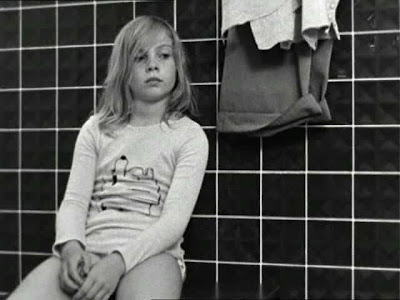presentation by Corry Shores
[Search Blog Here.]
[Central Entry Directory]
[Cinema Entry Directory]
[Filmmakers, Entry Directory]
[Wim Wenders, Entry Directory]
[Search Blog Here.]
[Central Entry Directory]
[Cinema Entry Directory]
[Filmmakers, Entry Directory]
[Wim Wenders, Entry Directory]
[See also the instance in The American Friend / Der amerikanische Freund]
Only Thing to Fear
Wim Wenders
Alice in the Cities
Alice in den Städten
Alice dans les villes
Gilles Deleuze
Cinema I
Cinéma 1
Ch 6:
The Affection-Image, Face and Close-up
L'image-affection : visage et gros plan
L'image-affection : visage et gros plan
3e:
[The Limit of the Face or Nothingness: Bergman] How to Escape It
[La limite du visage ou le néant : Bergman] Comment y échapper
[The Limit of the Face or Nothingness: Bergman] How to Escape It
[La limite du visage ou le néant : Bergman] Comment y échapper
This is already the case in Bergman's work even in its political aspects (The Shame, The Serpent's Egg) but also in the German school which extends and renews the project of such a cinema of fear. From this perspective Wenders attempts a transplantation and reconciliation of the two pedigrees: 'I'm afraid of being afraid.' [Deleuze, Cinema 1, 1986:103b]
C'est déjà le cas pour l'œuvre de Bergman jusque dans ses aspects politiques (« La honte », « L'œuf du serpent », « La peur »), mais aussi pour l’école allemande qui prolonge et renouvelle le projet d'un tel cinéma de la peur. Dans cette perspective, Wenders tente un transplantation et une réconciliation des deux lignées : « J'ai peur d'avoir peur ». [Deleuze Cinéma 1, 1985:13-14]
Deleuze, Gilles. Cinema 1: The Movement-Image.Transl. Hugh Tomlinson & Barbara Habberjam, London: Continuum, 1986
Deleuze, Gilles. Cinéma 1: L'image-mouvement. Paris: Les éditions de minuit, 1983.













